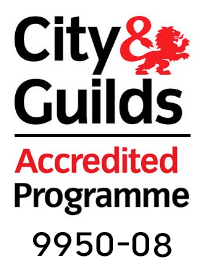When you take part in any of our locksmith training courses, you’ll learn about the different types of locks available to homes throughout the United Kingdom. Locks are a sound defence mechanism and are usually a suitable deterrent. In fact, they’re so important that, in some cases, insurance providers will only offer cover where British Standard locks are being used, such is their reliability.
However, as much as we love talking about locks (and training you to enter, utilise, and repair them), they’re not the only line of defence when it comes to security. Turns out, there are quite a few other simple methods that you can be using around your home to reduce the likelihood of any burglary or theft.
Here are just a few of our favourites – share them with customers with you’re on site (or, if you have no ambition to become a locksmith anytime soon, then make sure that you’re implementing as many of these tips as you can!).
Maintain Door and Window Security
Of course it begins with doors and windows! But we’re not just talking about the locks that you keep on them (although these should be regularly inspected and kept in top condition as well).
Instead, we’re looking at everything else – the materials, alignment, fitting, and quality of the doors and windows in your home. Even the smallest defect or sign of damage could present an opportunity to a burglar. Be sure to maintain the condition of every entry door and window in your property and you’ll greatly reduce the risk of anything happening.
Your home insurance provider will also be interested in the condition of doors and windows on your property.
Patio Door Security
Next up, make sure and spend some time checking the security of any patio doors or french doors on your property – burglars are particularly interested in using these as an entry and exit point inside your home.
First of all, ensure that the cylinders and handles are approved to the appropriate Sold Secure (SS) standards. Even if they are, then why not considering adding a Patlock? This simple mechanism is Neighbourhood Watch recommended and ensures that, even if the lock is damaged, the external handles won’t operate.
There are no keys and codes and it’s fitted within seconds – it doesn’t get any simpler than this.
Security Lights
The next handy tip focuses on the exterior of your home in the form of security lights. These lights are growing in popularity – and it’s easy to see why. Motion-sensor lights are very reasonable and offer great value-for-money.
If any burglar decides to have a sneak peek around your property, they’ll be quick to flee the scene when motion-activated lights shine a bright light straight down on them. You’ll know exactly when the lights go off – and so will your neighbours.
Indoors, timers and other remote-control devices can switch lights on and off to provide the illusion of somebody being home.
Additional Door Security
There’s more to your door than the locking mechanism, and our next home security tip illustrates that perfectly.
Adding something as straightforward as a chain can provide another level of security to your front door. At the very least, it will frustrate any burglar and delay something they want to perform quickly. Ideally, it adds enough security to prevent a theft altogether.
Another idea is to add a letterbox guard. Again, this is something which is relatively cheap to install, and it could prevent burglars from using any ‘fishing’ style approaches where they can manipulate your lock (or even steal keys left inside the door).
Visible Burglar Alarms
Our final home security tip is one that everybody should have already considered by now –installing a home security system. It’s important that your alarm system is configured correctly. Trust us when we tell you that you don’t want the dog starting the alarm at 3AM.
Get a high-quality and dependable home security system installed. It’s especially important that the alarm is visible from the outside of your home. If a burglar can see it, then there’s a very good chance that they won’t attempt to steal anything from your property – it simply isn’t worth it.
CCTV is another option that can be tied into your home alarm system and provides an additional level of security and evidence.
To find out more about home security tips and advice from the experts, please don’t hesitate to get in touch with our friendly team.
Alternatively, if you’re a young locksmith new to the industry and you’re looking to add to your skillset with our uPVC door or auto locksmithing courses, then why not get in touch with our team?




